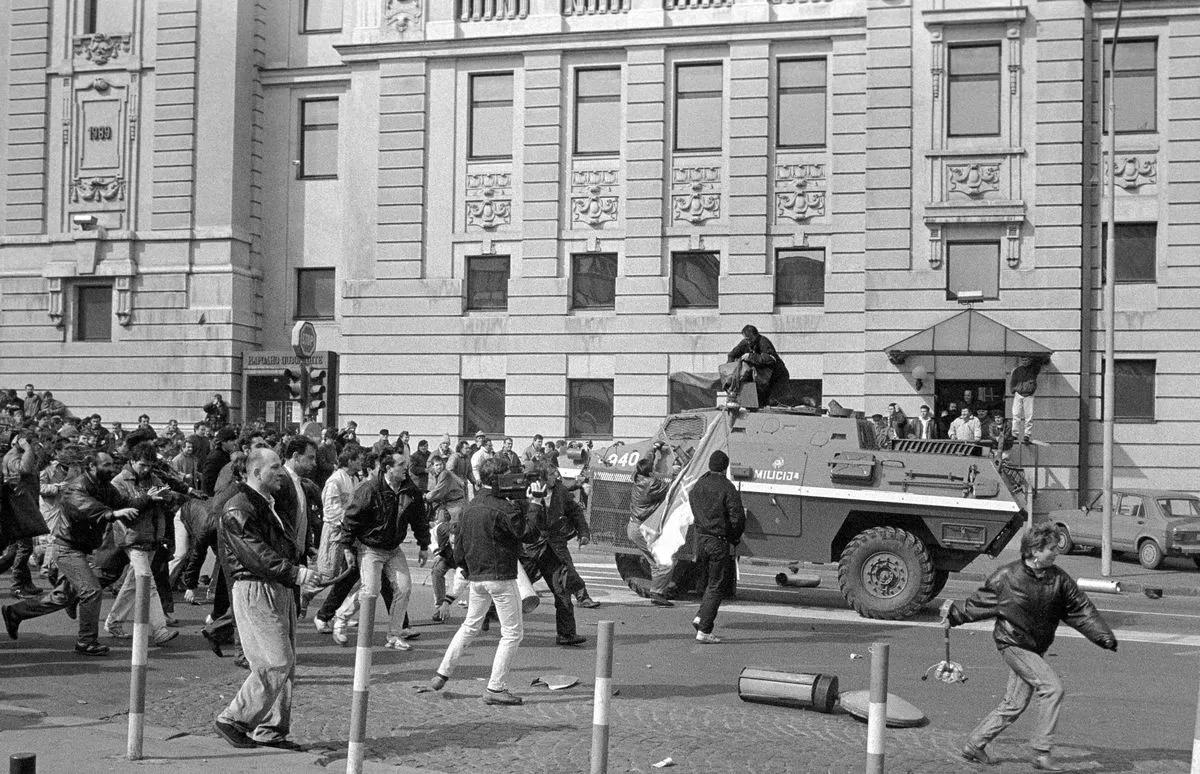 Goranka Matić, March 9th, 1991. Courtesy of November Gallery
Goranka Matić, March 9th, 1991. Courtesy of November Gallery In one of Goranka Matić's photographs, two young men hold open student indexes, partially covering their faces. These booklets, containing personal information and grades, are essential to every student in Serbia. Captured during the 1996/97 protests against Slobodan Milošević's regime—when Serbia was still part of the Socialist Republic of Yugoslavia—the image could just as easily have been taken today. Four months into ongoing student protests, sparked by the collapse of the railway station canopy in Novi Sad that claimed 16 lives and seriously injured one other person, a new generation is once again on the streets, demanding accountability and an end to the corruption that led to this tragedy.
Yet, one figure is missing from these familiar scenes. Goranka Matić, who once documented such moments with her sharp eye and distinct perspective, is no longer with us. Her passing earlier this year left a profound absence, a realization that, for the first time in recent history, these events will not be framed through her lens.
Her loss is deeply felt, bringing to mind the images that defined her career—political, humorous, at times cynical. Through them, she distilled the essence of her time with clarity and unapologetic honesty.
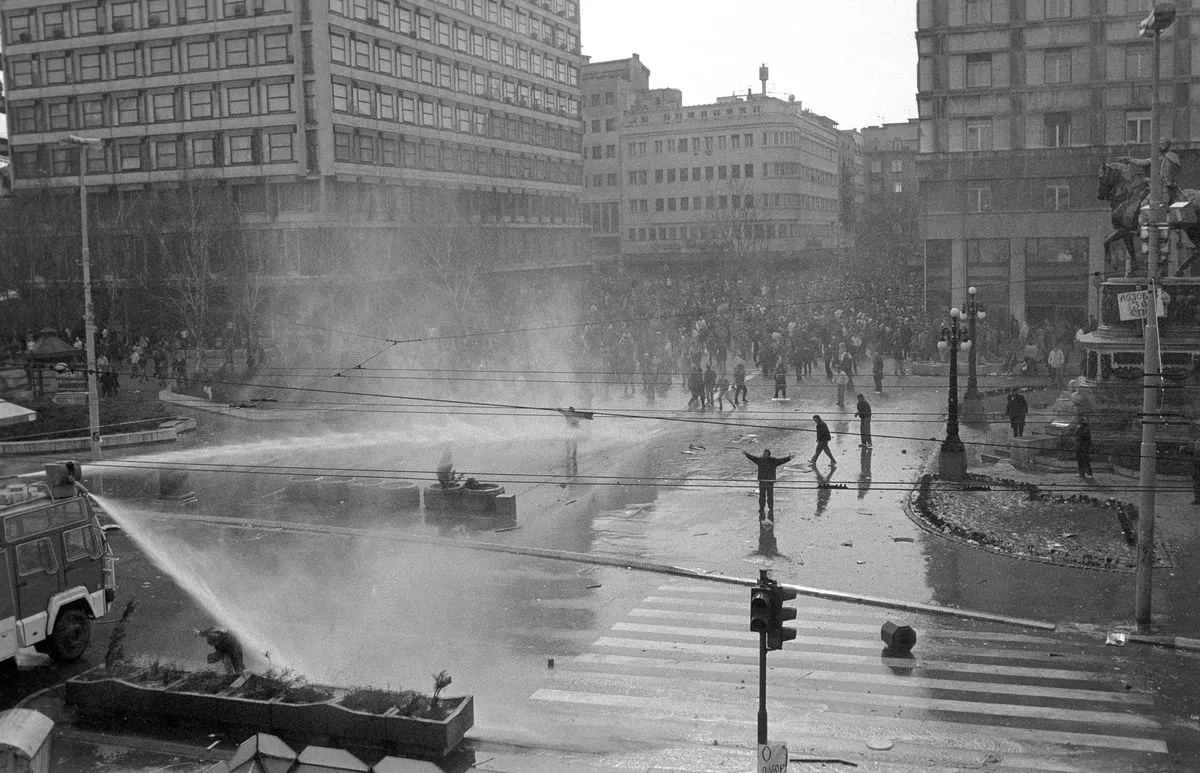
Turning to this heritage, the November Gallery in Belgrade has staged Memory and Hope, an exhibition commemorating Goranka Matić's life and work. Curated by Una Popović and Mia David, the show features over 200 photographs from 1990 to the early 2000s and honors her commitment to capturing the political, cultural, and social pulse of Serbian society.
"This is the first exhibition we've organized without Goranka's presence; it feels not only strange but also carries an added sense of responsibility," said curator Una Popović. "Because I had the experience of working with her, I kept thinking about what she would have wanted, what she would have expressed through this exhibition in relation to the social context. Goranka never stood on the sidelines—she acted, she participated. So, even if not physically, she would always lead with her heart and feelings." Reflecting on the process, she added:
And that's exactly how we created this exhibition—quickly, instinctively, guided by pure feeling and experience, with heart and empathy for her as an activist-conscious person.
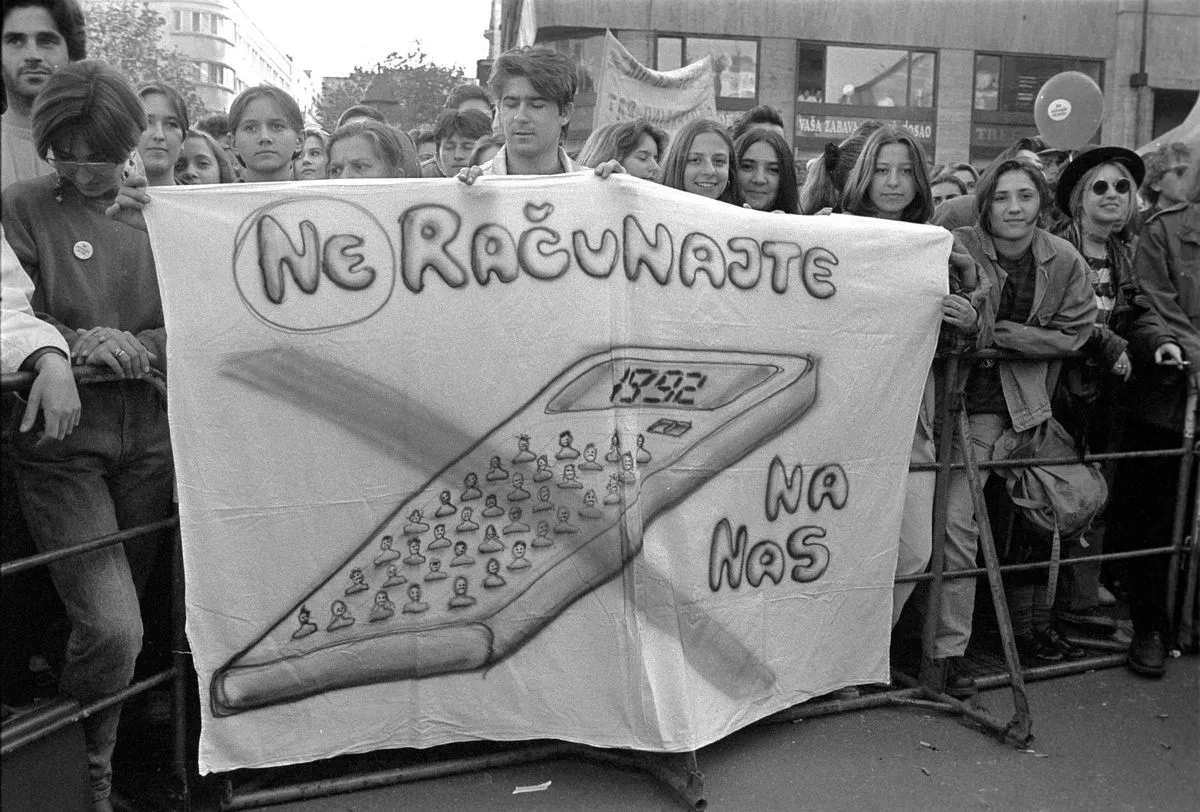
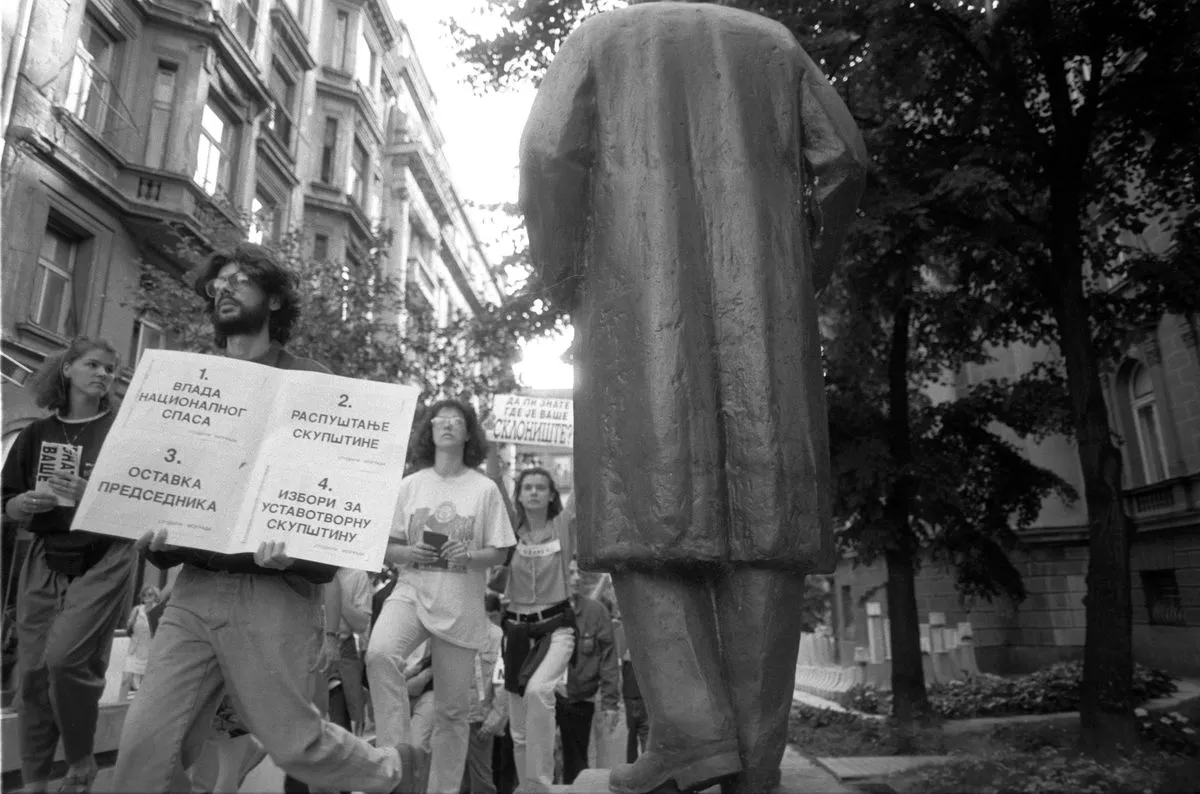
One of Serbia's most significant photographers, Goranka Matić (1949–2025) documented the country's cultural and political transformations over four decades. From the charged atmosphere of Yugoslavia's New Wave music scene in the 1980s to the mass protests of the 1990s and 2000s, her images captured both the urgency of events and the individuals within them. Moving seamlessly between journalistic, documentary, and artistic photography, she shaped the visual memory of an era.
Graduating in art history, Matić began her career at the Student Cultural Centre in Belgrade, a key site for Yugoslavia's avant-garde art scene, where performance and conceptual artists initiated their earliest experiments. She also photographed musicians, writers, and political figures, publishing her work in leading Yugoslav magazines and later serving as a photo editor for Vreme and Politika.
More than a witness, she was deeply engaged in the world she captured. Whether navigating the dynamic energy of a crowd or the quiet intensity of a portrait, she approached each with a sensitivity to the emotional and psychological depth of the moment.
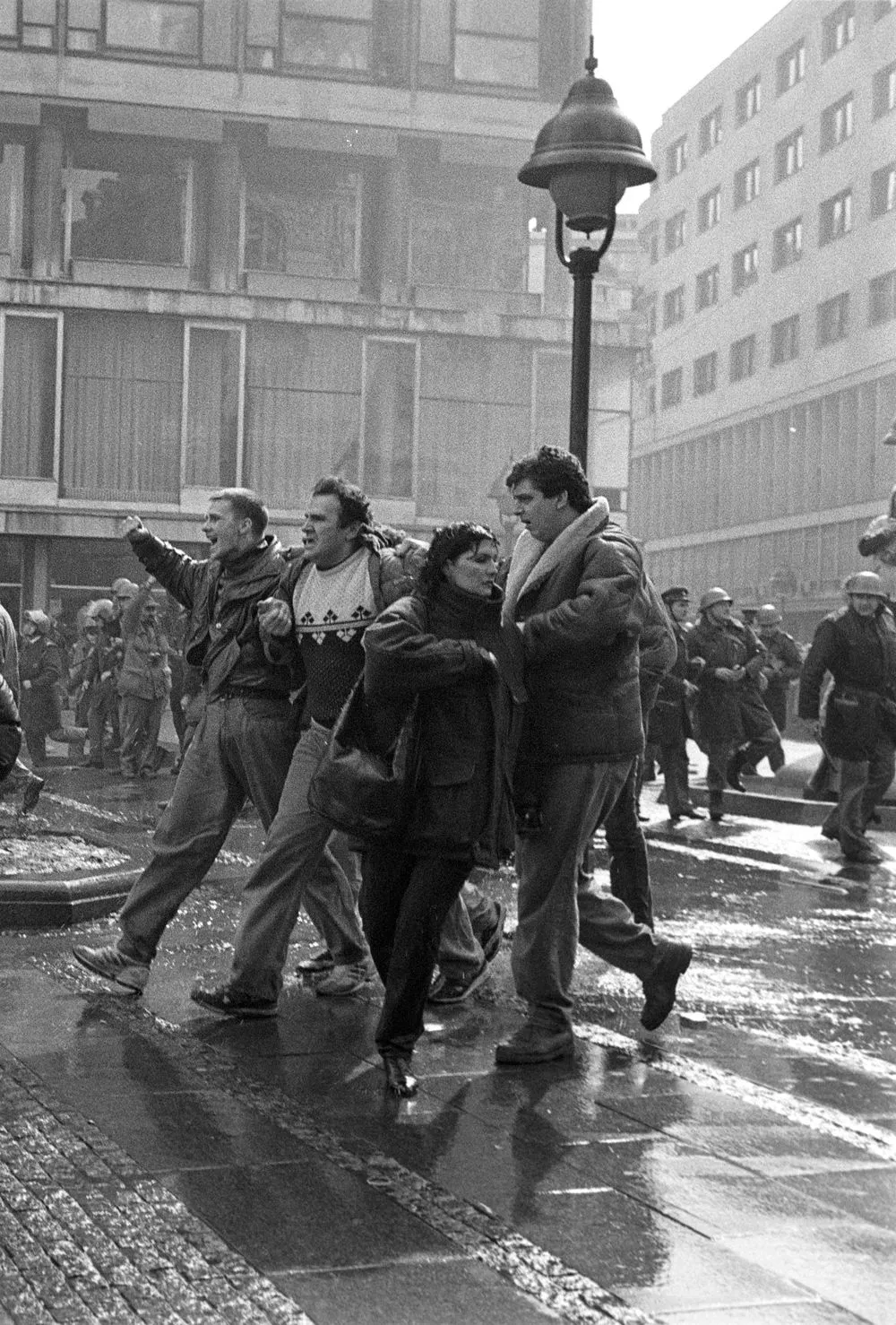
The exhibition at November Gallery offers a glimpse into the revolutionary breadth and talent of Matić, who never positioned herself as a detached observer. She was at the heart of the action, capturing the struggle, joy, and both collective and individual efforts toward a better future with equal compassion and professionalism. Reflecting on her approach and later interest in protests, she noted:
I learned how to photograph crowds from rock concerts, elbowing with the camera, figuring out how to capture the crucial moment—the decisive instant—amidst the chaos. What moved me ideologically and visually while photographing the protests of the 1990s was the Black Wreath action, from the Albania Palace to Slavija, where people held a black wreath in protest against the war.
The images of the anti-war protest with the black wreath reflect Matić’s approach; she was at the heart of the events, mingling with activists and offering a unique perspective from below, with the black wreath dominating the horizon. This powerful image serves as both a statement against the impending horrors of the Yugoslav war and a testament to the photographer’s personal engagement.
In the exhibition's catalogue, Una Popović highlights a theoretical perspective on documentary photography by American photographer and theorist Allan Sekula. Sekula argued that documentary photography not only captures the moment and the world but also reflects the photographer's personal stance. It is a form of 'silent activism,' where prevailing ideology and personal perspective are deeply intertwined.
"Even if I didn’t agree with someone's stance, I always intended to understand it," Matić emphasized on one occasion.
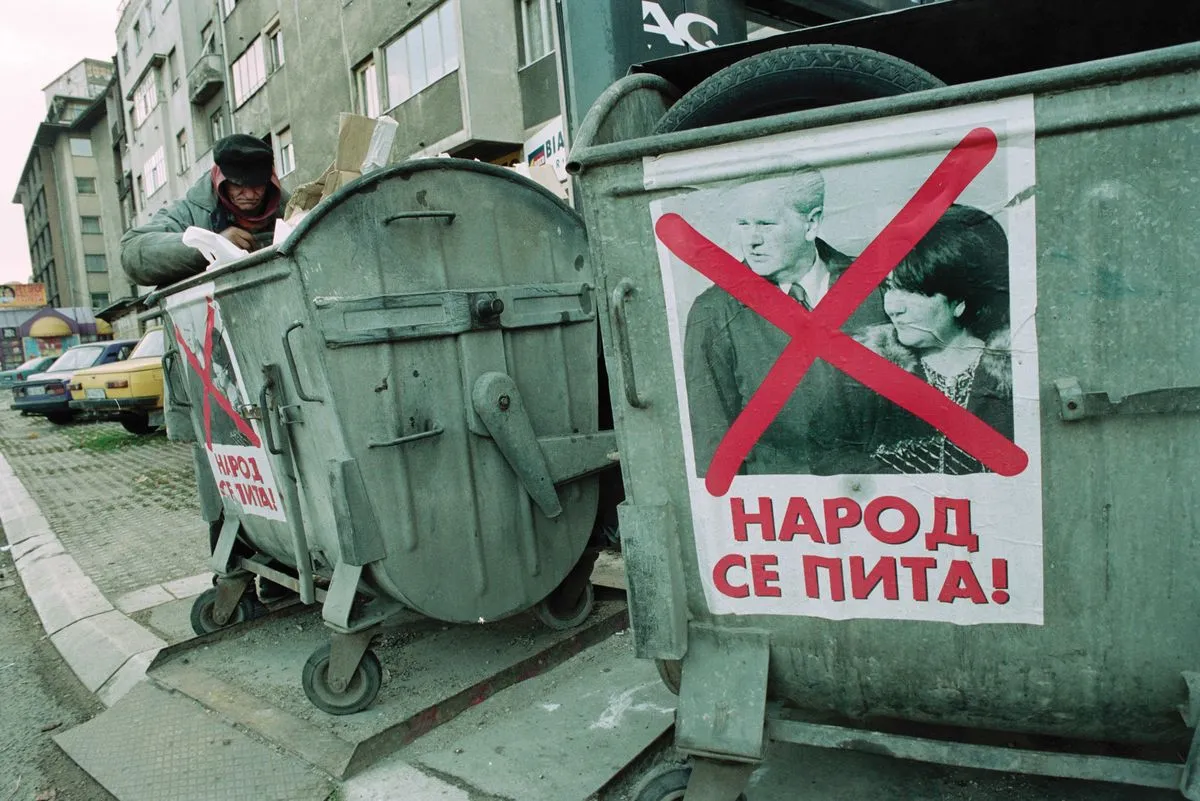

Her photographs reflect this non-judgmental and open attitude, which earned her the love and appreciation of so many. In this moment of ongoing social struggle for a more just and compassionate society, Matić's legacy emerges as a living archive—a source of insight and strength for envisioning change, reckoning with the past, and finding hope, as the exhibition's title suggests.
As Serbia stands at a crossroads once again, with its citizens demanding accountability and justice, Matić's work challenges each viewer to recognize their role in shaping society and to embrace collective responsibility for a better future.
The exhibition Memory and Hope will be on view at November Gallery in Belgrade until April 6th, 2025.